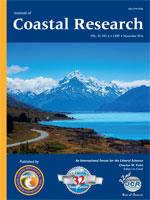Santos, F.L.; Reis, M.T.; Fortes, C.J.E.M.; Lotufo, A.D.; Neves, D.R.C.B.; Poseiro, P., and Maciel, G.F., 2016. Performance of a fuzzy ARTMAP artificial neural network in characterizing the wave regime at the Port of Sines (Portugal).
Techniques based on artificial neural networks (ANNs) have been increasingly applied to predict emergency situations, such as extreme wave conditions, wave overtopping or flooding, and damage to maritime structures, in coastal and port areas. In this work, a fuzzy adaptive resonance theory with mapping (FAM) ANN was trained to predict the wave regime both inside and at the entrance to the Port of Sines, one of the major trade and economic gateways of the Iberian Peninsula, located on the Portuguese west coast. In situ measurements using pressure sensors, wave buoy data, and results from two numerical wave propagation models—simulating waves nearshore (SWAN) and diffraction refraction elliptic approximation mild slope (DREAMS)—were used to train and validate the ANN. The wave regime was calculated for different points outside and inside the port. In general, the FAM predictions outside the port showed a satisfactory fit to the wave parameters (significant wave height, peak wave period, and mean wave direction) from the numerical model SWAN. Inside the port, differences from the DREAMS model were greater, because the optimized FAM parameters were obtained only for outside the port and the FAM network showed some difficulties in accounting for the complex phenomena of wave refraction, diffraction, and reflection within the port. Consequently, it is of paramount importance to obtain the FAM results based on fully optimized parameters to use the FAM output in place of the numerical models of wave propagation. Nevertheless, this methodology proved capable of providing a fast and satisfactory response that is especially useful in the scope of risk management, particularly in wave forecasting and warning systems.





